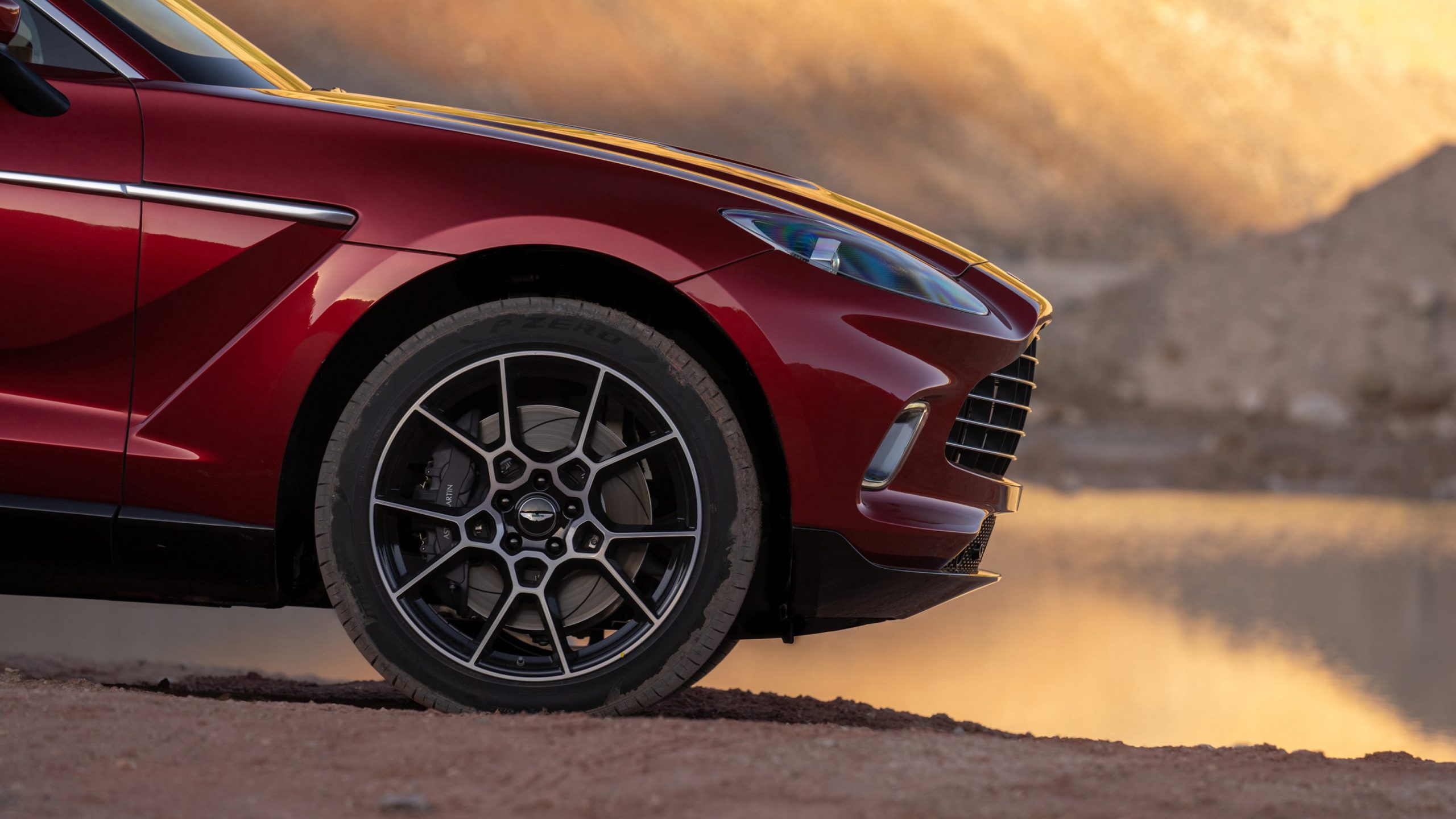Aston’s boss tells CarAdvice why the DBX is vital to Aston’s future.

Times are tough at Aston Martin. The English sports car maker’s share price has fallen by two thirds since it floated on the UK stock market last year, hit by both the uncertainties of Britain’s chaotic Brexit from the European Union and slipping demand for its traditional sports cars.
Money is getting tight. Aston raised US$150 million ($219.7 million) through a bond sale paying a usurious 12 per cent annual interest back in September, with much of that cash dedicated to getting the DBX to market.
If the first Aston Martin SUV isn’t a hit, the company’s medium-term prospects look bleak.
You can see the finished car and read full technical details in our reveal story, but CarAdvice also got the chance to speak to Aston Martin CEO Andy Palmer about why he commissioned the DBX, and what he hopes it will achieve.


It’s fair to say Palmer didn’t delay in starting work on what became the DBX when he joined in 2014.
“Four days,” he remembers, “and that was only because it took that long to have some serious face time with [creative director] Marek Reichmann … We talked at length about putting a business plan together for the board within 90 days, and needing an asset at the next Geneva Motor Show that I could use as a backdrop for unveiling what would become the Second Century Plan.”
Before taking the reins at Aston Palmer had been working as Nissan’s head of product development, a role that had convinced him any all-new Aston needed to be an SUV.
“The car industry was evolving and tastes were changing, at the top as well as further down,” Palmer says.
“I felt that the Vantage, the DB9 and the Vanquish were all too close together, it was difficult to tell the difference and there was lots of cross-shopping going on.
“So the gaps between those cars, or their successors, needed to be widened, but I also felt we needed to do something to redefine the grand tourer. I just felt there was this huge, gaping space – we needed something different and the Bentayga didn’t exist at that time, so it was relatively radical thinking.”
Market research among existing Aston owners quickly reinforced the new boss’s view – 72 per cent of them already owned some kind of SUV.
“So in the first instance we see lots of existing Aston owners wanting to add a DBX,” he says, “but of course they won’t be prepared to compromise on what their existing vehicles are already offering.
“That’s why we have to make sure it delivers on usability but also the driving experience buyers expect from an Aston Martin.”
Of course, the five year gap between Palmer’s green-light and the finished DBX means it is arriving to a part of the market that is now filled with rivals – behind the Bentley Bentayga, Rolls-Royce Cullinan and Lamborghini Urus. Yet Palmer has no doubts that the DBX will fit in.
“I think each of the four cars has its own space,” he says.
“What we wanted to do was to make the most beautiful SUV, not necessarily the quickest. Although it is extraordinarily quick.”
Palmer insists – despite the sliding market valuation – Aston Martin is in a stronger position than at any other time in its recent history.
“You can look at the share price if you want and make assumptions from that, or you can say that in terms of EBIDTA [earnings before interest, tax, depreciation and amortisation] it’s the most successful it’s ever been,” he says.
“But we have to break out of this cycle of three cars and being largely dependent on the British economy. Expanding the portfolio allows us to get bigger in overseas markets and is transformational in terms of what it will do to the company … it means not having all of our eggs in one basket, to use that analogy.”
Senior executives are usually cagey when it comes to predicted sales figures ahead of the launch of a new model, but Palmer is happy to go on record with his desires for the DBX, which will be the first vehicle produced in Aston’s new factory in St. Athan, Wales.
“We have deliberately capped volume at 5000 a year so it’s always going to be a rare beast,” he says.
“We know Lamborghini had an exceptional launch with the Urus, I don’t know their current numbers but they were running at an annualised rate of 7000 a year.
“So it may be that the initial demand is greater, I hope so, but the reality is that we can’t produce more than 5000 in the first year anyway.
“We’re optimistic that demand is greater than 4000 a year and on average I expect we will be around there, because we need the capacity [at St. Athan] to do the Lagondas as well.”
Aston insiders have already indicated that faster versions of the DBX will follow fairly soon after the launch of the standard car, although Palmer says that we will have to wait longer for hybrid and full EV versions: “They will be at the end of this life cycle or the beginning of the next one.
“Like all models we plan a seven-year model cycle, so you can work it out from that.”
Palmer’s openness is refreshing – and his assertion that Aston Martin has to be in this part of the market is undoubtedly correct. The question now is whether the DBX will drive as well as it looks.
MORE: Get the lowdown on Aston Martin’s first-ever SUV
MORE: Aston Martin news, reviews, comparisons and videos
Aston Martin DBX: Andy Palmer on why it matters






